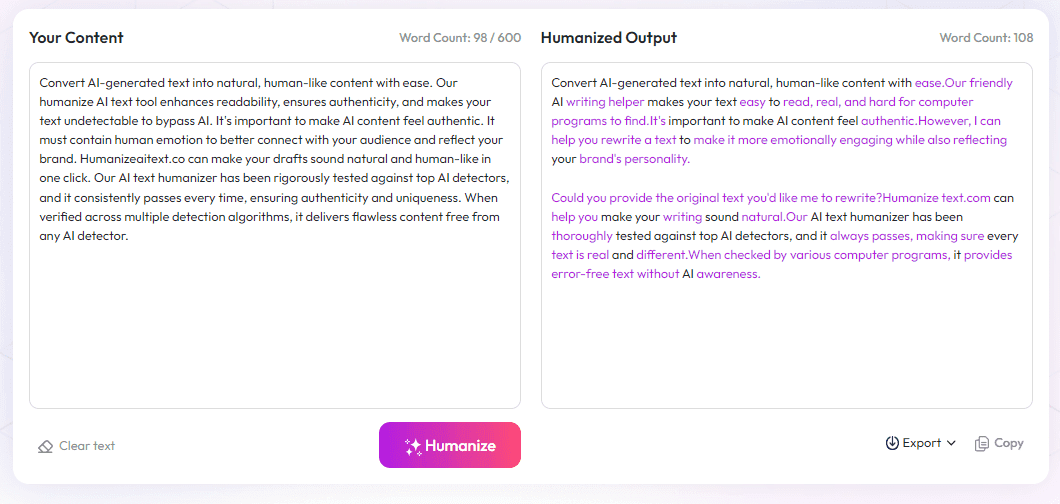Table of Contents
Ever tried to write a blog post and felt stuck before even starting? You're not alone—many people struggle with organizing their ideas in a clear way. Don't worry, though—learning how to create a good outline can make the whole process way easier.
Stick with me, and I promise that by the end, you'll have a simple, step-by-step plan to map out any blog post. Once you get the hang of it, writing will feel less like a chore and more like putting together a mini road trip.
In this guide, I'll show you how to break down your ideas so your readers can follow along without getting lost. Ready? Let’s get started!
Key Takeaways
Key Takeaways
- Creating a clear outline helps you organize ideas, rank better in search, and get featured snippets.
- Focus on understanding what your audience is searching for, and match that with precise, direct answers.
- Research existing snippets, analyze their style, and structure your outline to mirror their success.
- Write a quick summary answer first, then break down steps or key points under clear headings.
- Use simple language, relevant keywords naturally, and include data or examples to boost credibility.
- Design headings that are specific and easy to scan, making your content friendly for both readers and Google.
- Incorporate visuals like lists, tables, and images to make your outline more engaging and easier to follow.
- Test your outline’s effectiveness by checking how well it answers the main question and refine as needed.
- Structure your content with natural questions and answers to improve chances for voice search and snippets.

How to Write a Blog Post Outline: Step-by-Step Guide
Creating a clear and effective blog post outline is the secret sauce to writing content that ranks well and captures a featured snippet. If your goal is to appear at "position zero," your outline needs to answer the reader's question directly and concisely. This is especially true for "how-to" and informational queries, where Google loves to showcase quick, valuable answers.
To start, identify exactly what your readers want to know. Use tools like Google’s "People Also Ask" or look at current featured snippets to see the kind of content Google favors. Pay attention to the language: snippets are often short, precise, and directly address the question with minimal fluff.
Step 1: Understand the Search Intent
Before you even jot down a single point, ask yourself what the user is really after. Are they looking for a step-by-step process, a quick definition, or a list of tips? For example, if someone searches "how to write a blog post outline," the answer should be straightforward and cover the essentials. Matching search intent is key to ranking for snippets.
Step 2: Research Existing Snippets and Content
See what currently appears as a featured snippet or on the first page of Google for your target keyword. Analyze the length, style, and format of those snippets. Notice whether they are paragraphs, lists, or tables. Use reputable sources and include current statistics or facts that make your outline stand out.
Step 3: Define Your Core Question
Frame a clear, direct question that your outline will answer. For instance, "What are the steps to writing an effective blog post outline?" Make it specific enough to guide your structure and to match what users are searching for.
Step 4: Create a Concise Answer First
Write a one or two-sentence summary that answers the question. This can often serve as the featured snippet or be embedded within it. Keep it short, clear, and packed with keywords. For example, "To write a blog post outline, start by defining your main topic, identify key points, organize them logically, and review for clarity."
Step 5: Break Down the Steps or Key Points
List out the main stages or critical ideas that support your answer. Use numbered points for step-by-step guides or bullet points for a list of tips. This structure helps both users and search engines quickly find the information they need.
Step 6: Use Clear Headings and Subheadings
Each step or key point should have its own heading so Google can easily pick out the relevant information. For example, "Define Your Main Topic," "Identify Your Audience," and "Organize Your Ideas" are precise and user-friendly headers.
Step 7: Include Actionable Tips and Examples
Make your outline valuable by adding specific advice, like using certain tools or formulas. For instance, mention tools like how to write a foreword or tips for organizing ideas. Examples help clarify each point and make your outline more practical.
Step 8: Optimize for Featured Snippets
Ensure your outline answers the question in the first few sentences. Use clear, direct language and avoid filler words. If applicable, incorporate relevant data or stats—such as "Over 60% of marketers say content outlines improve writing speed"—to boost credibility and snippet chances.
In sum, crafting a blog post outline that ranks for a featured snippet boils down to understanding what the reader needs, researching current best answers, and structuring your content with clarity and precision. The next steps involve fleshing out your outline with detailed points and ensuring your content provides real value.

How to Identify and Use Relevant Keywords Effectively
Choosing the right keywords makes or breaks your chances of ranking high and getting featured snippets. Start by researching terms your target audience uses when searching for your topic. Use free tools like Google Keyword Planner or Ubersuggest to find popular and relevant keywords. Incorporate long-tail keywords that match specific questions or concerns to increase your chances of being featured. Place primary keywords in your headings, subheadings, and naturally throughout your content. Remember, Google favors content that closely aligns with the user's search intent, so avoid keyword stuffing and focus on providing value through relevant terminology.
How to Incorporate Data and Statistics to Boost Authority
Adding fresh, credible data can make your outline more convincing and attractive to search engines. Look for recent statistics from reliable sources like government reports, industry studies, or reputable news outlets. For example, citing that "Over 60% of marketers report that content outlines improve writing efficiency" can add credibility. Use data to support each key point and provide context—this helps Google recognize your content as authoritative. Always hyperlink to the original source to enhance trustworthiness and allow readers to explore further.
How to Craft Engaging and Clear Headings
Headings should be straightforward, descriptive, and easy to scan. Use active language and specific phrases that clearly tell readers what to expect. For instance, instead of "Step 3," write "Define Your Core Question"—this improves readability and SEO. Incorporate keywords naturally to help Google understand the content's relevance. Keep headings concise—preferably under 60 characters—and avoid jargon unless your audience is familiar with it. Clear headings guide your reader through the outline, making the structure intuitive and user-friendly.
How to Use Visual Elements to Enhance the Outline
Including visual elements like numbered lists, bullet points, or icons can help break up text and highlight key points. Use tables for comparing options or displaying data clearly. Charts and infographics can also be powerful to illustrate complex ideas visually. Visuals make your content easier to digest, especially on mobile devices. Ensure all visuals are relevant and optimized for fast loading. When appropriate, add alt-text to images for improved accessibility and SEO.
How to Test and Refine Your Outline
Before finalizing, test your outline's effectiveness by checking how well it answers the core question. Use tools like Google’s Search Console or conduct a quick Google search to see if your outline matches current featured snippets. Ask peers or a small focus group for feedback on clarity and usability. Adjust headings, add or remove points, and clarify language based on feedback and data. Keep an eye on emerging trends and update your outline to stay current and competitive.
How to Ensure Your Outline Supports Voice Search Optimization
With voice search on the rise, structure your outline to answer questions naturally and conversationally. Use natural language phrases that people would say out loud, like "How do I…" or "What is the best way to…". Incorporate question-based headings that sound like actual voice queries. Ensure your concise answer at the beginning aligns with what voice assistants typically extract for snippets. This way, your content has a better chance of being picked up by voice searches and featured as a snippet.
FAQs
Start with choosing a main topic, then identify key points. Organize these into an introduction, body, and conclusion. Add subpoints and details for clarity. Finish by reviewing the structure to ensure logical flow and completeness.
It should include main points, subpoints, and key details. A clear outline guides writing and ensures all important aspects are covered. Avoid excessive detail; focus on structure and flow to stay organized during writing.
An outline helps organize ideas, ensures logical flow, and saves time during writing. It also helps identify gaps early, making the writing process smoother and more focused on valuable content creation.



